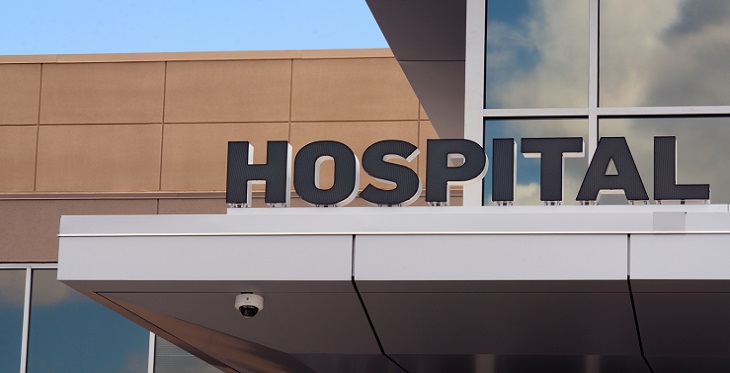How Telemedicine is Benefitting Critical Access Hospitals

Information Technology (IT) has transformed many areas and medical care is a key area that digitalization can affect and improve. Telemedicine is the application of medical care, diagnostics, information dissemination and treatment through digital and virtual processes. Critical Access Hospitals (CAHs) were introduced in 1997 as part of a program that aimed to increase access to medical care in rural areas of the United States. They are typically small hospitals that are set up at least 35 miles from any other hospital and have a maximum of 25 beds. Further, they provide patients with essential medical services but to a maximum of 96 hours.
Not all states have access to Telemedicine, although legislation has been enacted in the majority of states. Some states like Arizona ha legislation for telemedicine even before CAHs were introduced. In 1995 the Arizona Telemedicine Program model (ATP) was developed and still operates along wide numerous newer programs across the state, delivering medical education and treatment across the state. Other states, like Utah, have also been expanding their telehealth networks and are one of the few states that benefit from no limits on telemedicine to specific healthcare providers. Additionally, in Nevada, the USDA (US Department of Agriculture) has invested almost a million dollars in telemedicine projects for rural Nevada.
1. How Rural Hospitals Can Benefit
Telemedicine has the capacity to affect systems and treatments across all areas of medical care. With regards to rural hospitals, in particular, telemedicine assists in helping CAHs meet their staffing needs, making sure there are always enough physicians and medical care providers virtually available to deal with demands. Telemedicine also gets rural areas in touch with specialists and experts that they would otherwise have no contact with. If a disease, virus or infection breaks out in a rural area, the appropriate specialist can videoconference with the CAH staff and patients. Furthermore, with telemedicine, even the most remote and rural of areas can instantly get access to medical professionals for advice and information.
2. 24/7 Emergency Care Services from CAHs
Telemedicine benefits these hospitals by helping the CAH hospitals discharge patients early and keep to their 96-hour limit while being able to virtually check up on patients and deliver 24/7 care. Often, with their limited capacity and availability, the emergency departments of CAHs can get overwhelmed and beds filled with patients that don’t necessarily require emergency care.
3. Finance Health IT
As telemedicine services have gained popularity over the last few years, the costs to set-up services have decreased substantially. The initial cost of implementing the technology needed for telemedicine may seem off-putting for CAHs when they first entertain the idea, however, the benefits and longevity of access should be seriously considered. Additionally, as most telemedicine equipment is software-based, it can work with existing IT systems. Virtual hospital staff cost only a small amount compared to in-hospital staff while providing equal quality in care. CAHs also have the option of government-funded grants for telemedicine equipment that can provide CAHs with the funding boost they need to kick-start telemedicine services.
4. Increase Speed of Treatment
The efficient nature of telemedicine services provides a solution for a key problem for the majority of CAHs and patients. Often, rural care means waiting lengthy times for doctor appointments, transferrals and specialist appointments since physicians only come to the CAH a limited amounted of time. With telemedicine, patients in even the most rural areas can quickly book virtual appointments and receive the necessary medical advice.
5. How Reliable Connectivity is Essential
The prerequisite for excellent telemedicine services is reliable broadband connectivity. Unreliable broadband causes confusion between patients and physicians and increases the risk of miscommunication. To prevent general frustration and uncertainty, CAHs must be provided with access to seamless broadband services.
6. Helping Hospitals Manage Capacity
With 24/7 telemedicine solutions, patients that don’t need emergency care can virtually connect with a doctor from home while discharged patients can attend virtual check-ups and receive virtual care, thus largely increasing the care capacity of the hospital.
7. How Telemedicine Can Help Reduce Hospital Readmissions
The best methods of reducing readmissions is to improve preventative care and after care. Since rural areas are typically far away from medical services, patients tend to wait until medical problems are serious before making the journey to the hospital. With telemedicine and the option of remote monitoring, patients can contact medical staff to check on changes in health and receive the appropriate care that will prevent symptoms advancing to an unnecessary level of severity. Additionally, remote monitoring allows physicians to ensure that patients are correctly following their aftercare advice and discharge instructions. Improper aftercare can result in complications that require readmission, but virtual check-ups allow both the patient and physician to feel confident that they are healing as intended.
Conclusion
Telemedicine is an advancement in medical care that has untapped potential in providing safe and accessible healthcare information to rural communities. It is a method of filling any gaps in healthcare and ensuring even the most remote patients have access to top-quality care.
